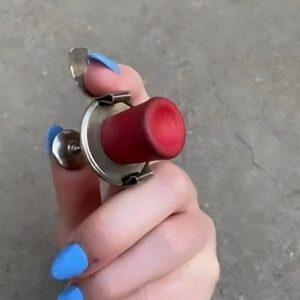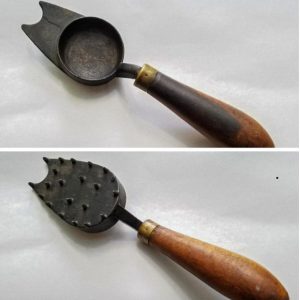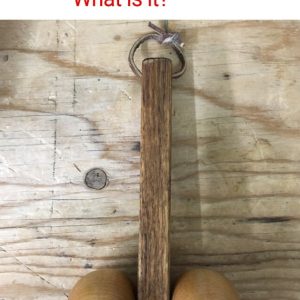In today’s fast-paced, tech-driven world, where everything is designed to be faster, smaller, and smarter, there’s something deeply comforting about a tool that doesn’t rely on Wi-Fi, apps, or even a screen. Enter the vintage soldering iron—a quiet icon in the world of craftsmanship that continues to win hearts across generations.
You’ve probably seen one collecting dust on a workbench or displayed proudly in a maker’s garage. But don’t let the old-school design fool you. This little tool has a long history, and it’s still proving its worth in a modern setting. Let’s take a closer look at how this modest device became a symbol of skill, patience, and creativity.

From Fire and Iron to Fine-Tuned Precision
Before the days of circuit boards and microchips, soldering was already a thing—think ancient Egyptians fusing metals for jewelry or Romans repairing tools. They used heat, basic alloys, and a whole lot of patience. It was a slow, smoky process, but it worked.
Fast forward to the early 20th century, and the soldering iron went electric. That’s when things really took off. Inventors like Ernst Sachs helped shape the future of the tool, turning it into a precise, dependable device used in everything from building radios to wiring up early televisions.
The beauty of the vintage soldering iron lies in its simplicity. No digital controls, no flashing lights—just a metal tip, a solid handle, and the ability to fuse things together with a little heat and a steady hand.
Video: Skillful Copper Soldering
The Unsung Hero of the Electronics Boom
When we think about the golden age of electronics—the post-war era of innovation that brought us radios, televisions, and early computers—the soldering iron was right there, making it all happen. Before automated assembly lines and robotic arms, it was a person with a soldering iron connecting every resistor, transistor, and wire.
These early soldering irons had to be reliable. They had to heat evenly, hold temperature, and last through hours of use. That’s why many of the vintage models still around today are built like tanks. Thick handles. Heavy-duty cords. Tips that rarely needed replacing. They were designed to work hard and last long.
Beyond Electronics: A Tool for Artists and Artisans

While soldering might sound like something reserved for engineers in lab coats, it’s also been a favorite among artists and hobbyists for decades. Stained glass makers, for instance, rely on soldering irons to fuse the metal strips that hold colored glass together. It’s part science, part art, and all about control.
Crafters, jewelry designers, and even model builders have used vintage soldering irons for their ability to deliver clean, strong joints with just the right touch. In the hands of a creative mind, a soldering iron becomes more than a tool—it becomes an extension of the artist.
Built to Last: Why Vintage Soldering Irons Still Hold Up
Let’s be real. A lot of modern tools are designed to be cheap, lightweight, and—unfortunately—disposable. That’s not the case with most vintage soldering irons.
These classics were built with quality materials: thick copper tips, durable metal housings, and heat-resistant handles. Some were made with interchangeable parts, allowing users to swap out components and keep the iron going for decades. It wasn’t just about selling a product—it was about building trust.
Video: a fascinating YouTube video that takes a deep dive into the world of vintage soldering iron restoration
And here’s the kicker: many of those old irons still work perfectly today. Some hobbyists actually seek them out, buying and restoring them for personal use. They say there’s something special about the weight, the feel, and the reliability that newer models just can’t match.
Old-School Charm Meets Modern Innovation
Sure, today’s soldering irons come with digital displays, temperature dials, and wireless options. And yes, for microelectronics and delicate work, that precision is handy. But there’s a reason people still reach for their vintage tools.
It’s not just nostalgia. It’s about craftsmanship. About feeling connected to the process. Using a vintage soldering iron is like writing with a fountain pen instead of typing on a keyboard—it’s slower, maybe, but far more satisfying.
That said, some modern tinkerers are blending the old with the new—retrofitting vintage soldering irons with updated heating elements or power cords. It’s the best of both worlds: classic durability with contemporary efficiency.
The Symbolism of Soldering in a Throwaway World

In a culture obsessed with upgrades and replacements, the soldering iron represents something refreshingly different. It’s about fixing instead of throwing away. Creating instead of consuming.
You can’t rush soldering. You have to be present, focused, and intentional. It’s a meditative process, and for many, it’s deeply rewarding. Whether you’re repairing a vintage radio, building a DIY synth, or restoring an old lamp, the soldering iron becomes a bridge between what was and what could be.
Why the Vintage Soldering Iron Still Matters
Let’s not underestimate the impact of this humble tool. Without it, entire industries—electronics, manufacturing, even space exploration—would have looked very different. But beyond its practical contributions, the vintage soldering iron carries emotional weight.
It’s a reminder that great things often come from slow, thoughtful work. That tools don’t have to be flashy to be effective. And that the hands holding the iron are just as important as the device itself.
Conclusion: Holding On to Craftsmanship in a Fast-Moving World

The vintage soldering iron may seem like a relic, but its legacy is anything but outdated. It embodies a timeless commitment to precision, patience, and passion. It’s more than just a piece of metal and wire—it’s a tool that shaped history and continues to inspire creators today.
Whether you’re a professional, a hobbyist, or someone who just loves working with your hands, there’s something magical about plugging in an old soldering iron and bringing something back to life. And in a world where everything feels temporary, that kind of permanence feels pretty revolutionary


